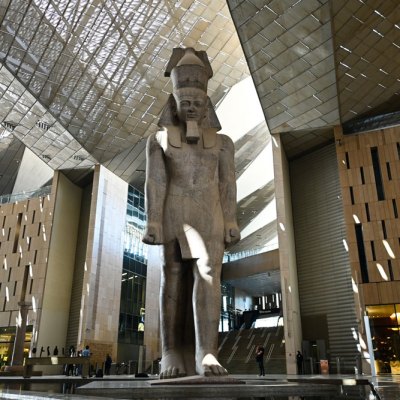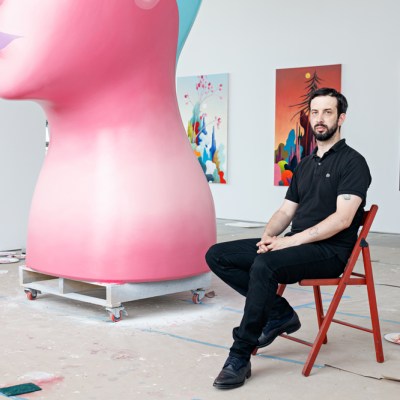With hundreds of exhibitions and events vying for attention in London during Frieze week, Apollo’s editors pick out the shows they don’t want to miss
In 1893, the sculptor Camille Claudel produced Clotho, a 90cm-high nude figure with hair so dense and matted it seems to impair both her vision and her movement. Named for the youngest of the three Fates – though she’s presented here as an elderly woman with a ravaged visage – Clotho was conceived as part of a dialogue with Claudel’s mentor and lover Auguste Rodin. Nicolas Party’s latest exhibition, at Hauser & Wirth (14 October–20 December), takes its name from Claudel’s sculpture and responds to the work of both artists. Portrait of Camille is a brightly coloured rendering of a young androgynous figure whose body is concealed by two versions of Clotho in the foreground; the sculptures, free of Clotho’s baleful barnet, look upwards inquisitively. Portrait with Auguste is similar in composition, albeit with more muted hues: the central figure – who bears a slight resemblance to Claudel – stands behind Rodin’s She Who Was the Helmet Maker’s Once Beautiful Wife (1885–87), which may have inspired Claudel’s Clotho. These portraits are surrounded by paintings of trees, many of which are spectral and denuded; the sense of melancholy is deepened by the gallery walls, which have been painted electric blue.
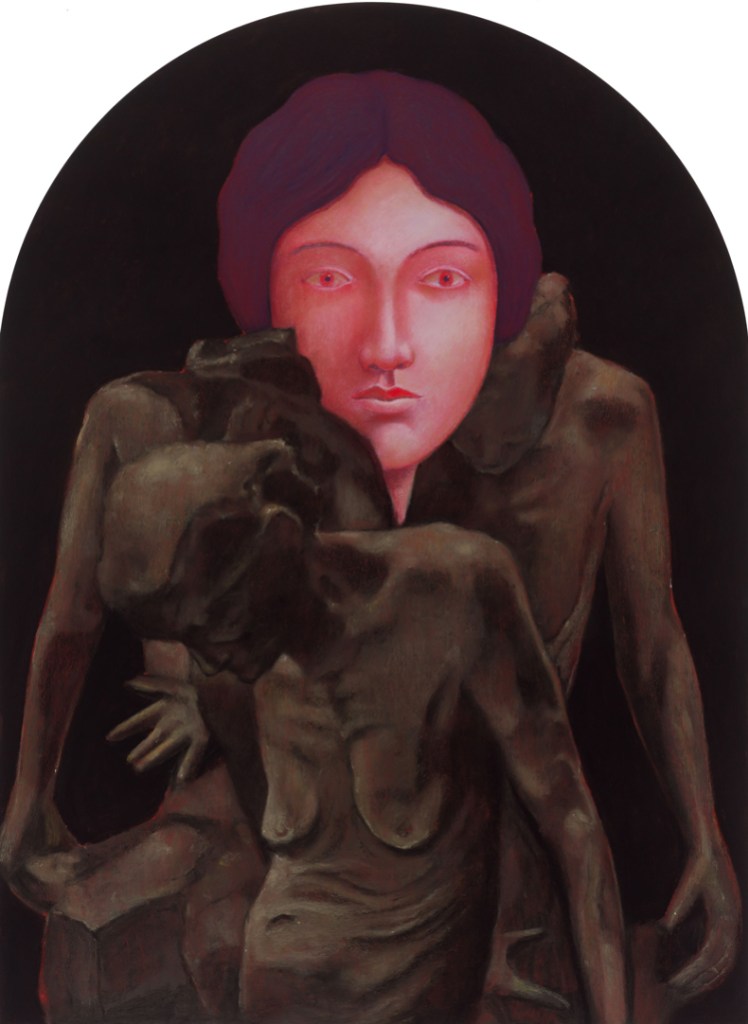
The blue mood continues in Holland Park. Walter Sickert once said that love and death were ‘the only two subjects of all great art’; Piano Nobile is politely correcting him by pointing out that ennui is just as present in his work. This selling exhibition (until 19 December) draws on the collection of Herbert and Ann Lucas, who avidly collected paintings, drawings and prints by Sickert. Their collection of prints, which includes etchings, engravings and lithographs from across Sickert’s career, is remarkable, but the centrepiece of the exhibition is the artist’s oil painting Ennui (1913). Five versions of the work exist, owned by institutions including the Tate, the Ashmolean and the Royal Collection Trust (it’s one of King Charles III’s most cherished works); it depicts a publican sitting, smoking and staring into the distance while his wife leans on a chest of drawers, her head out of view. It captures ‘the accumulated weariness of innumerable days’, to quote another of the painting’s illustrious admirers, Virginia Woolf.
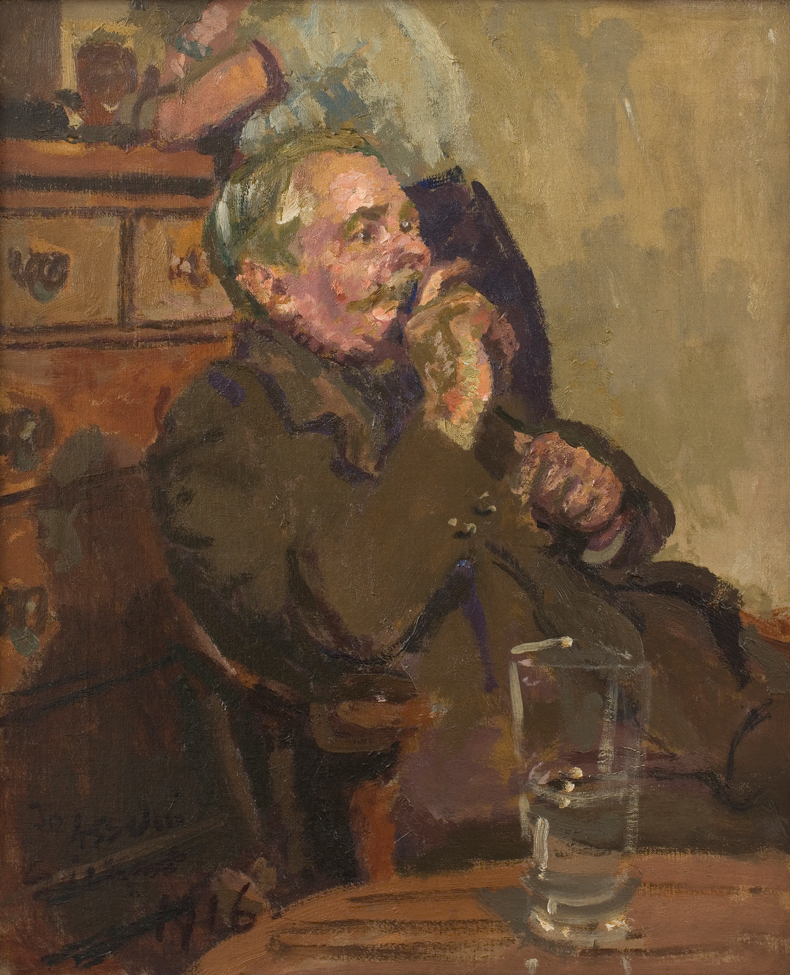
Of all the marvellous objects at Sir John Soane’s Museum in Holborn, one of the most astonishing is the alabaster sarcophagus of Pharaoh Seti I, who reigned from roughly 1290 BC until his death in 1279 BC. It is so large that Soane had to demolish part of his own back wall to manoeuvre it in. The appeal of its pearly alabaster glow and ornate hieroglyphic carvings is clear, but Soane would also have been intrigued by the fact that Seti I was, like him, an architect. This exhibition (until 18 January 2026) covers the many ways in which ancient Egypt has influenced British architecture and design over the last 250 years. The objects on display include decorative items such as Wedgwood ceramics; a ‘Sphinx’ sewing machine from the 1930s; Egyptian-inspired silks by Liberty; and John Outram’s designs for Sphinx Hill in Oxfordshire, which was completed in 1999. Also known as the Egyptian House, its many Egyptian motifs – including barrel-vaulted roofs and an attic whose facade resembles the Eye of Horus – have earned it Grade II listed status.
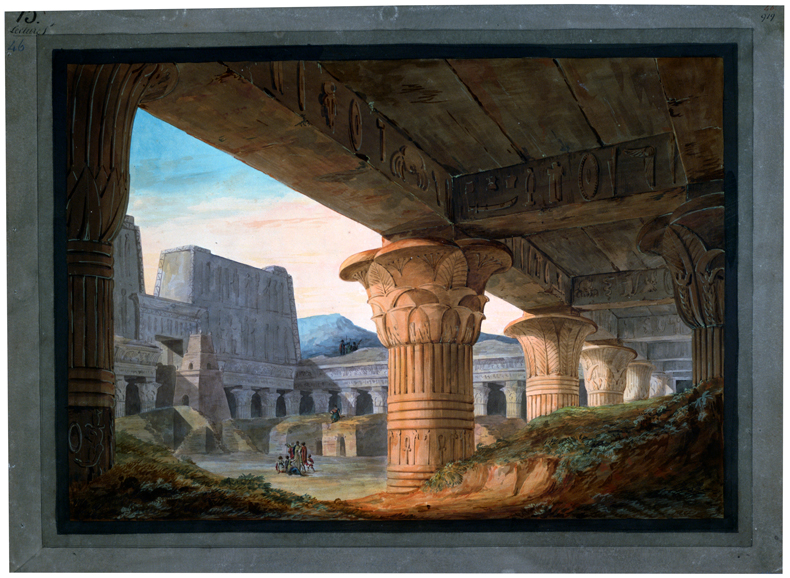
Nicolas Party: Clotho (Hauser & Wirth, 14 Oct–20 Dec)
Sickert: Love, Death and Ennui (Piano Nobile, until 19 Dec)
Egypt: Influencing British Design 1775–2025 (Sir John Soane’s Museum, until 18 Jan 2026)

